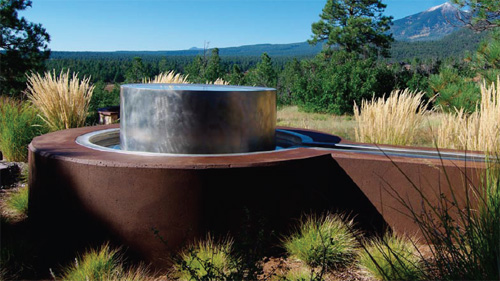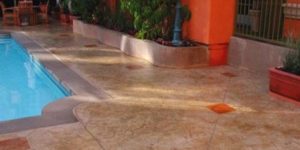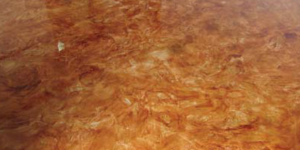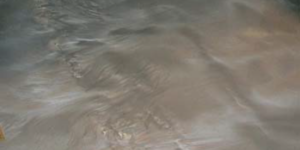Source: Ray Anger & Gene Jordeth
Decorative Concrete Staining & Scoring Inc., Scottsdale, Ariz.
www.decorativestaining.com
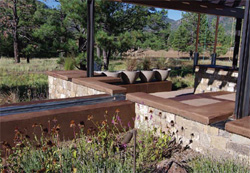 The finish on this water feature was achieved using a handful of soy-based products. It’s a great way to get a more earth-friendly surface that boasts deep, rich colors to boot. As an additional plus, the concrete is profiled with garnet abrasives, which not only ensure a low-dust blasting experience, but also give the finished surface a reliably nonslip surface.
The finish on this water feature was achieved using a handful of soy-based products. It’s a great way to get a more earth-friendly surface that boasts deep, rich colors to boot. As an additional plus, the concrete is profiled with garnet abrasives, which not only ensure a low-dust blasting experience, but also give the finished surface a reliably nonslip surface.
Ingredients
Ecoprocote Eco-Etch Pro
Ecoprocote SoyCrete: custom espresso-colored blend
Ecoprocote Acri-Soy
Special equipment required: media-blaster, 80-grit washed garnet abrasive, grout sponge with a white scrub pad on the backside
Directions
- Using professional media blasting techniques and 80-grit washed garnet abrasive, profile your surface to open up the concrete and give it a good level of porosity. This will not only allow for the best staining and sealing results, but it will also provide a nonslip surface, making this an excellent application for floors as well.
Note: If you’ve never done this type of media blasting before, consult with an experienced professional or the product manufacturer before jumping in.
- Once you’ve finished blasting your surface, apply a coat of Eco-Etch to small areas of the surface at a time. It will begin to fizz as it works. Scrub it across the surface with a nylon bristle brush. This will clean and descale the concrete, remove any excess lime, protect against efflorescence, and make the concrete even more receptive to the stain.
Note: If excess lime is not a concern for your surface, you can omit this step.
- Let the Eco-Etch rest until it ceases fizzing or for up to about 10 minutes — be careful not to let it dry!
- Pressure-wash the surface thoroughly.
- Once the surface has dried completely, use the grout sponge to apply a thin coat of SoyCrete. Rub the stain into the concrete with the spongy side, being very careful not to oversaturate the surface. Go over the surface again with the white scrub pad to help minimize any application marks.
Remember that soy-based stains should not be put on too heavy or they will oversaturate, which can lead to longer drying times and uneven color and will prevent the sealer from penetrating the substrate. In some cases you might need to change sponges and wipe off any excess material. The key to this effect is thin applications.
- Once your first coat of stain has dried, which usually takes about 4 hours, apply a second coat in the same manner.
- Let the stains cure overnight.
- The following day, seal the surface with two thin coats of Acri-Soy, also applied using sponges.
- Let cure completely.



